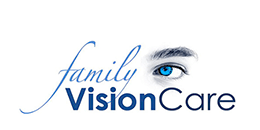If you’re like most parents, you’re confident that you’d know if your child wa having difficulty seeing the board at school or wasn’t doing well in the extracurricular activities because of vision issues. Unfortunately, the truth is often quite the opposite. In many cases, children can’t express that they’re having problems with their vision, or don’t realize that the world doesn’t look like this for everyone. Further, many eye or vision problems don’t show symptoms until they have progressed significantly which often makes the condition harder to treat.
Conditions such as amblyopia (lazy eye) or strabismus (crossed-eyes) show up in early childhood, and are corrected more effectively when they are diagnosed and treated then, rather than waiting until the child is older, when these conditions will have already progressed significantly.
Want to learn more about your child’s vision and how you can help them reach their full potential? Here are some FAQ’s about children’s vision that every parent should know:
Q: How often should my child have an eye exam?
A: According to both the American and Canadian Optometric Associations, you should bring your baby in for their very first eye exam at around 6 months old. This ensures that essential visual functions, such as eye team and basic hand-eye coordination are developing properly. If there is a possible concern with your baby’s first exam, your eye doctor will advise when to come in again. If your eye doctor doesn’t find anything of concern in this initial eye exam, your child’s next eye exam should be at around 3 years old.
The next exam after that should be just before they enter school, and then they should have an exam every year. Of course if your child is experiencing difficulty in school or after school activities that may be due to a vision problem, you should schedule an eye exam immediately.
Q: My child passed their school vision screening. Does he still need an eye exam?
A: Yes. Basic school vision screenings are a fine way to check your child’s visual acuity (if their vision is 20/20 or not), but aren’t able to check for less obvious visual issues or eye diseases that can have just as big an impact on their learning. Detecting and treating these issues requires a trained eye doctor, with an eye clinic equipped with testing equipment specifically designed for these purposes.
A comprehensive eye exam at our Mt Pleasant eye care clinic includes testing for difficulties with visual skills such as eye teaming, visual focus and convergence/divergence. We will also be able to check for eye conditions such as strabismus (crossed eyes) and amblyopia (lazy eye).
Q: My child has strabismus and amblyopia. What are their treatment options?
A: Early detection and treatment are key for successfully correcting these conditions. The best outcomes usually come from cases where strabismus and/or amblyopia arre treated before around 8-10 years old. Your eye doctor will take a close look at the severity of your child’s conditions and determine the best course of action. If the strabismus is severe, surgery may be required to straighten and properly align the crossed eyes. After that, your child’s amblyopia can then be treated using eyeglasses, eye patching, or vision therapy. This will help to strengthen the weak eye and train both eyes to work together.
Q: What is vision therapy?
A: Vision therapy is a doctor-supervised, individualized program of at-home and in-office exercises that are specifically designed to strengthen the connection and coordination between both eyes and the brain. This helps correct issues with eye alignment, focusing, coordination, tracking and more. Vision therapy experts will often use tools such as specialized lenses or prisms to further promote improvement of specific visual skills. The process usually takes about 6 months to see lasting improvement.
Q: How can I stop my child’s nearsightedness from getting worse?
A: Myopia (nearsightedness) is an increasingly serious problem in this generation, as eye care professionals the world over grapple with children’s eyesight getting worse much faster at much earlier ages. Fortunately, research has shown that certain non-surgical treatments, known as “myopia control,” or “myopia management,” have been shown to significantly slow, or even stop myopia progression in children. Speak to your eye doctor today to find out what forms of myopia management would work best for your child.
Q: Every morning it is a fight to get my child to wear her glasses. What can I do?
A: Especially for children who are new to wearing glasses, it can simply take time for them to get used to the feeling of wearing them. They may not be used to the weight of glasses on their face, or may have an issue with their glasses constantly sliding down. Fortunately, many glasses for small children come with an integrated headband that can help ensure that they don’t continue to slip down, and continued wearing of their glasses can help children get used to the feeling of wearing them.
Very often, especially for small children that can’t tell you what is bothering them, the reason for a child’s refusal to wear glasses is that something is not comfortable. It could be that the prescription is not right, that the glasses pinch or that are feeling heavy. It could be worthwhile to take the glasses back to the eye doctor to ensure that they are in fact a proper fit.
Q: At what age is it acceptable for a child to wear contact lenses?
A: There is no official “right age” for children to start with contact lenses. Rather, parents should consult their local eye doctor to decide if their child is responsible enough to properly clean, store and wear their contacts. If it’s decided that they are responsible enough, your eye doctor will speak to you and your child to decide wat kind of contact lenses fit their needs and lifestyle.
